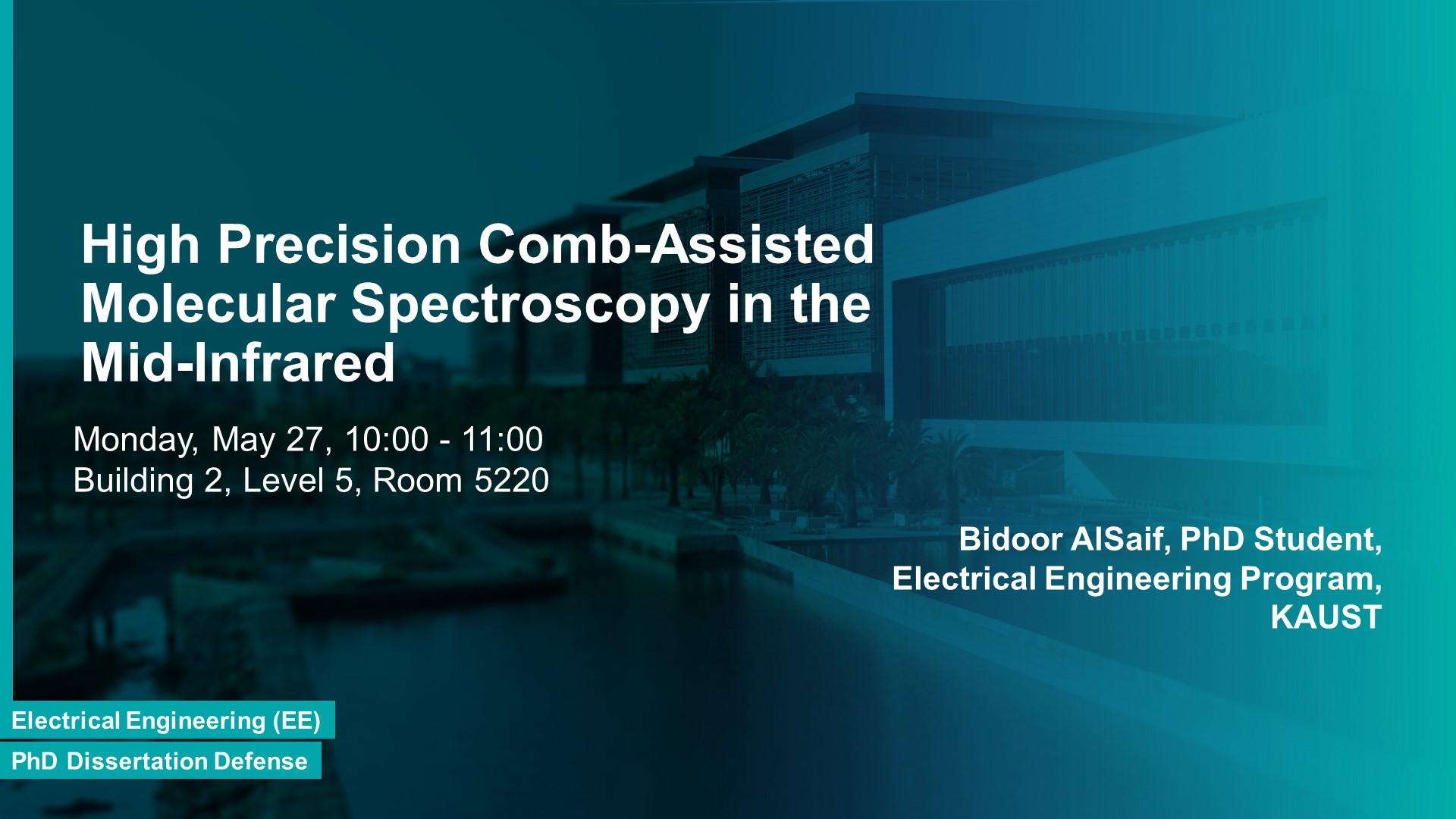Abstract
The design of laser-based optical sensors relies heavily on precise spectroscopic knowledge of atomic and molecular absorption transitions. Accurate spectroscopic information is invaluable in several fields such as biology, chemistry, astronomy, and environmental science. Within the electromagnetic spectrum, the mid-infrared (MIR) region can enable sensors with higher sensitivity due to the stronger absorption cross-sections. Moreover, MIR spectral transitions correspond to the fundamental vibrational motions of the molecules and are thus considered fingerprints of the molecular structure. Vibrational bands contain many rotational transitions, resulting in fine-splitting of spectral bands, particularly in gaseous samples. In order to resolve the fine rotational structure of vibrational bands, high-resolution MIR spectrometers are needed.
By combining the accelerating technology of optical frequency combs (OFC), known for their application in metrology and high-precision molecular spectroscopy, with the wide tunability of extended cavity quantum cascade lasers (EC-QCL) in MIR, we can perform highly resolved and sensitive measurements in the molecular fingerprint region. This thesis is aimed at combining these two technologies to accomplish high precision spectroscopy and sensing over a wide region in the MIR. In this work, we were able to lock the optical frequency of an EC-QCL to an OFC by utilizing nonlinear optics in the form of sum frequency generation (SFG). By this novel approach, we managed to reach a steady frequency lock of the EC-QCL for the first time, as reported in Scientific Reports (Lamperti, AlSaif et al., 2018). Exploiting the locked EC-QCL and applying it for spectroscopy in MIR over a wide region of ~ 100 cm-1, a fully automated spectrometer was developed to achieve 63 kHz uncertainty in the linecenter frequency of one of the most important greenhouse gases, nitrous oxide N2O, (AlSaif et al., JQSRT 2018). Recently, the spectrometer was extended to perform sub-Doppler saturated spectroscopy of the Lamb Dip features of N2O. Finally, we added high sensitivity, by means of cavity ringdown spectroscopy (CRDS), to the high precision of our spectrometer to measure frequency-swept ring down events for the detection of CO2 isotopologue in the MIR.
Brief Biography
Bidoor AlSaif is a physics graduate from College of Science (Imam Abdulrahman bin Faisal University) in Dammam. Thereafter, she completed her MS degree in Physics from the King Saud University. She joined KAUST Electrical Engineering Program in 2013 in to peruse her PhD degree. Motivated by astonishing world of laser physics and its wide applications, she joined Prof. Aamir Farooq to develop sensors in the mid-IR with quantum-cascade lasers (QCLs) and to perform precise spectroscopic measurements. She achieved highly accurate spectroscopic measurements of one of the most important greenhouse gases (N2O). She is interested in the detection of a variety of gas species at low concentrations which is very important in a number of fields such as biomedical sensors, environmental monitoring and chemical kinetics.
